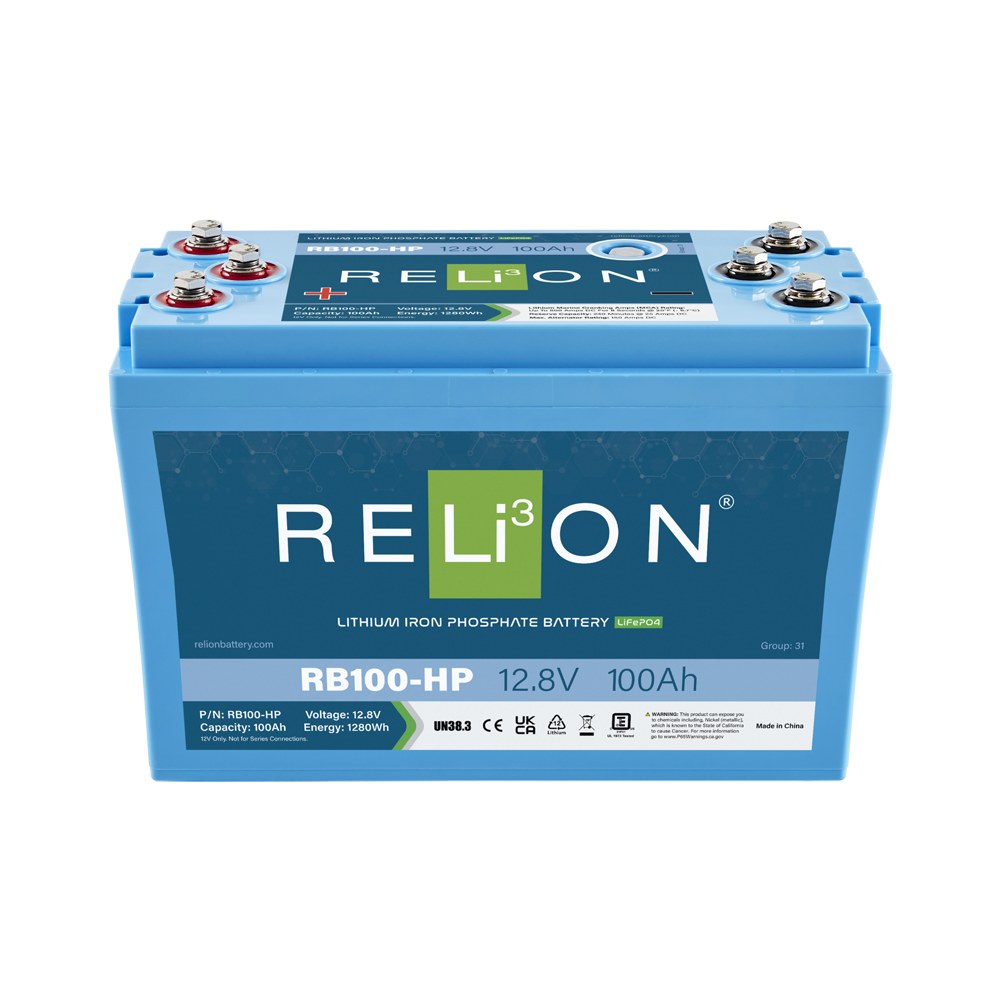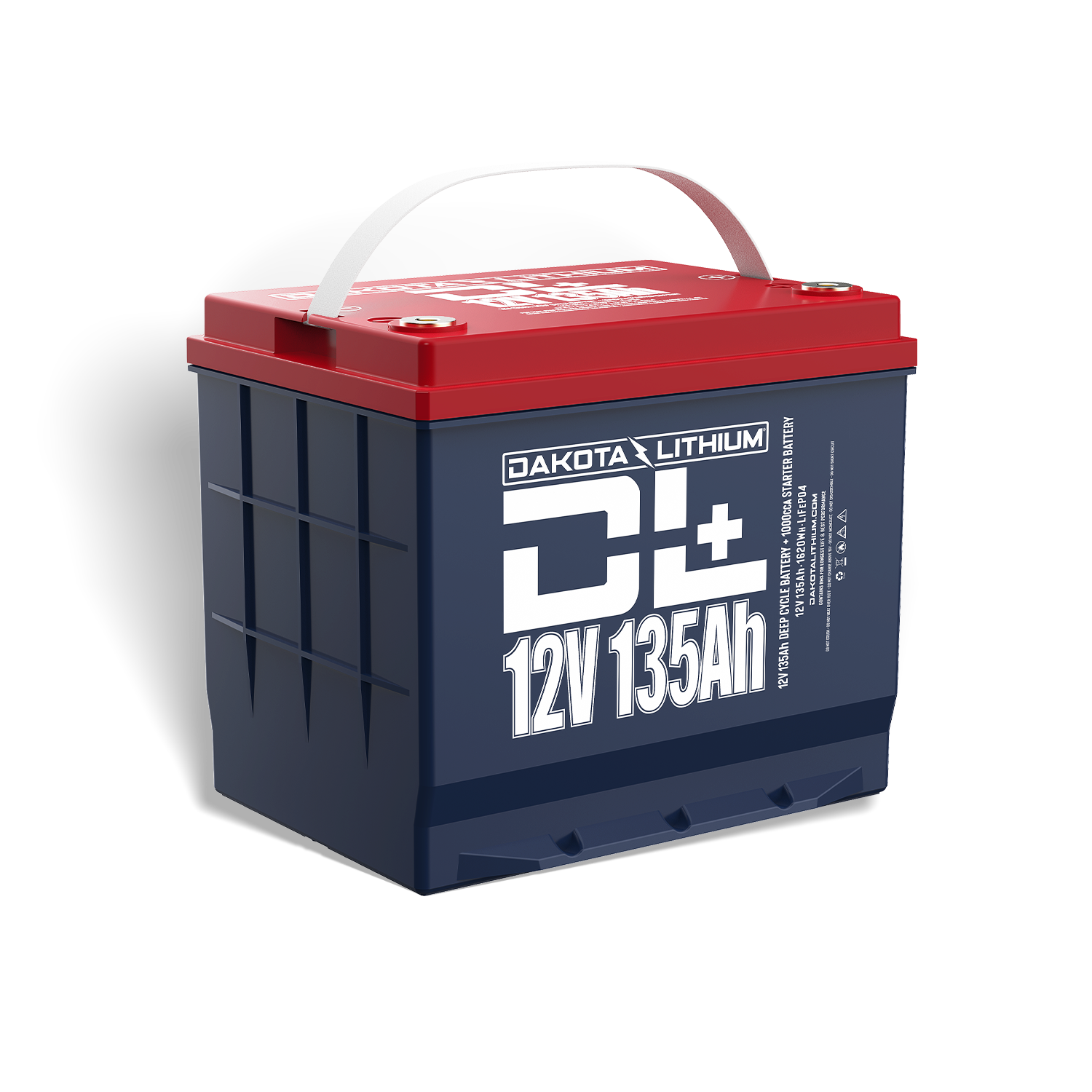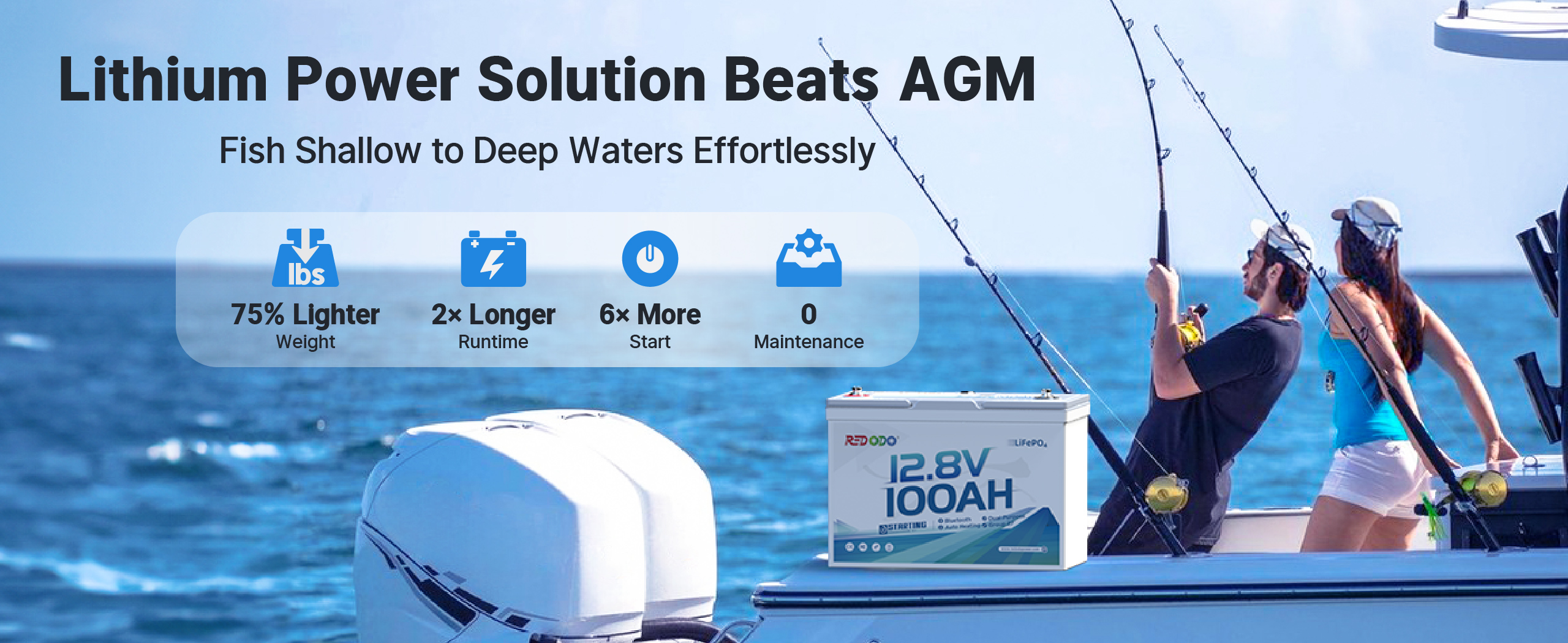When you’re out on the water, your boat’s power source is essential. For many small boats with limited space, the best option isn’t just a starting battery or a deep cycle battery, it’s a dual purpose marine battery. But what is the best dual purpose marine battery on the market?
In this article, we’ll explain what makes a dual purpose marine battery, how to choose the right one for your boat, and recommend the best battery for dual-purpose use.
Table of Content
What is a Dual Purpose Marine Battery?
A dual purpose marine battery is designed to perform two critical functions:
- Starting the engine with a quick burst of power (like a marine starting battery).
- Providing sustained power for electronics, trolling motors, lights, and appliances (like a deep cycle battery).
The versatility makes dual purpose batteries ideal for boaters who need an all-in-one solution, especially when space or budget is limited. Instead of buying and maintaining two different batteries, you can rely on one battery to handle both tasks.
Why Choose a Dual Purpose Marine Battery?
Here are some common scenarios where a dual purpose marine battery makes sense:
- Small to mid-size boats that don’t have space for multiple battery banks.
- Recreational boaters who want convenience without compromising reliability.
- Fishermen who need both cranking power and steady discharge for accessories like fish finders or trolling motors.
- Weekend boaters who use their vessel occasionally and prefer one dependable battery.
The key advantage is versatility. While a dedicated marine starting battery or deep cycle battery for trolling motor may perform better in its specific role, a dual purpose battery provides a balanced solution for boaters who need both.
Lead-Acid vs. Lithium: Which is Best for Dual Purpose?
Traditionally, most dual purpose marine batteries have been made with lead-acid technology. While affordable, lead-acid batteries come with drawbacks such as heavy weight, shorter lifespan, and slow charging times.
Modern boaters are increasingly switching to lithium marine batteries because they outperform lead-acid in almost every way:
- Lighter Weight: Lithium marine batteries are up to 60% lighter, making them easier to install and improving boat performance.
- Longer Lifespan: Lithium batteries often last 10+ years (4000+ cycles), compared to 3–5 years for lead-acid.
- Faster Charging: Lithium charges up to 5x faster, so you spend less time waiting at the dock.
- Higher Usable Capacity: You can use 90–100% of a lithium battery’s capacity, versus only 50% with lead-acid.
- Built-In Function and Protection: Many lithium batteries include a Battery Management System (BMS) for safety and function optimization, likes Bluetooth and auto-heating capability.
Key Features to Choose the Best Dual Purpose Marine Battery
1. Cranking Amps (CCA or MCA)
This measures the battery’s ability to start your engine. A higher rating ensures reliable engine starts, especially in cold or challenging conditions.
A good dual purpose marine battery should have enough CCA to match or exceed your engine manufacturer’s recommendation. If your engine requires 600 CCA, choose a battery with at least that rating.
Read More: What Are Cold Cranking Amps (CCA)?
2. Capacity (Ah)
This indicates how long the battery can run electronics before needing a recharge. If you often use trolling motors, navigation lights, or fish finders, look for a battery with higher capacity.
3. Cycle Life
Dual purpose batteries are designed to withstand charge/discharge cycles. A longer cycle life means your battery will last more seasons before replacement. For example, a lithium battery can last 4000+ cycles, which is equivalent to a ten-year service life.
4. Durability & Vibration Resistance
Marine environments are tough, and exposure to waves, vibrations, and saltwater requires a rugged, sealed battery. Choose a marine battery with IP65 or higher waterproof and dustproof rating.
5. Weight and Size
Especially for smaller boats and kayaks, lighter batteries improve efficiency and performance. Lithium batteries are much lighter than lead-acid counterparts of the same capacity, making them easier to install and improving boat efficiency.
Always check the battery dimensions to ensure it fits your battery compartment. A Group 27 and 31 battery size are the most common marine battery sizes.
Best Dual Purpose Lithium Marine Battery Options
Redodo’s 12V LiFePO4 batteries are an excellent choice for dual purpose marine use. They combine high cranking amps with deep cycle reliability, making them a versatile solution for most boat types.
Redodo 12V 100Ah Group 27 Dual Purpose Marine Battery
The Group 27 marine battery offers one of the most competitive prices on the market compared to other lithium dual purpose batteries, making it an excellent value for boaters. Its 100Ah standard capacity is perfectly suited for small to mid-sized boats, providing both reliable cranking power and steady deep-cycle performance.
Key Features:
- Battery type: EV-Grade LiFePO4
- Capacity: 100Ah
- Cold cranking amps (CCA): 900A
- Weight: 22.82 lbs (approx. 60% lighter than lead-acid)
- Waterproof Rate: IP67
- Cycle life: 4000+ cycles at 100% DOD
- Additional Function: Bluetooth, Low-temp Protection, OTA, Auto-energy reserve

Shop Now | Get a discount at Redodo Battery Sale
Redodo 12V 140Ah Group 31 Dual Purpose Marine Battery
The Redodo 140Ah Group 31 1000 CCA Battery stands out with its higher capacity, making it a better fit for boaters who spend longer periods on the water or run multiple onboard electronics. Its Group 31 size is one of the most widely used in the marine industry, allowing for a seamless drop-in replacement for traditional lead-acid without modification.
Key Features:
- Battery type: EV-Grade LiFePO4
- Capacity: 140Ah
- Cold cranking amps (CCA): 1000A
- Weight: 36.5 lbs
- Waterproof Rate: IP67
- Cycle life: 4000+ cycles at 100% DOD
- Additional Function: Bluetooth, Low-temp Protection, OTA, Auto-energy reserve

RELiON Group 31 RB100-HP Dual Purpose Lithium Battery
The RELiON RB100-HP is a well-known option in the marine battery market, delivering reliable cranking power and solid deep-cycle performance. It’s also one of the few lithium starting batteries that meets Mercury’s new engine specifications, making it a good match for Mercury engine owners. However, compared to Redodo’s 12V 100Ah Group 27 Dual Purpose, RELiON comes at a higher cost of $999.
Key features:
- Battery type: LiFePO4
- Capacity: 100Ah
- Marine cranking amps (MCA): 800A
- Weight: 29.8 lbs
- Waterproof Rate: IP67
- Cycle life: 2,000+ cycles at 80% DOD
- Additional Function: Provides six battery terminals for flexibility when connecting multiple electronics

Dakota Lithium 12V 135Ah Dual Purpose Marine Battery
Dakota Lithium is another well-known brand of marine lithium batteries. Its 135Ah model gives boaters more reserve power for long days on the water, while keeping a lightweight design into a Group 24 case. However, it also comes with a relatively high price tag at $999.
Key features:
- Battery type: LiFePO4
- Capacity: 135Ah
- Cold cranking amps (CCA): 1000A
- Weight: 27.2 lbs
- Waterproof Rate: IP67
- Cycle life: 5,000+ cycles at 80% DOD
- Additional Function: Self-heating

Compared with other well-known brands on the market, Redodo delivers advanced features at a highly competitive price of $350-$450. Redodo’s lithium dual purpose batteries are equipped with advanced Bluetooth monitoring and an automatic 25% energy reserve technology, ensuring you’ll never run out of energy unexpectedly while on the water. The high CCA rating provides stronger cranking power for your engine, making them the best dual purpose lithium batteries on the market.
FAQs About Dual Purpose Marine Batteries
Can I replace my starting battery with a dual purpose battery?
Yes, as long as the dual purpose battery has enough cranking amps for your engine.
How long do dual purpose marine batteries last?
Lead-acid models typically last 2–4 years, while lithium options can last 8–10+ years.
Are lithium dual purpose batteries safe for marine use?
Yes. LiFePO4 batteries are stable, non-toxic, and include built-in BMS protections for marine environments. It protects your battery from overcharge, over-discharge, overcurrent, overheating, and short circuit during operation.
What size dual purpose boat battery do I need?
It depends on your boat’s engine requirements (cranking amps) and how much energy your electronics consume (amp hours). For most boats, a 12V 100Ah lithium dual purpose battery is ideal.
If you plan to spend more time on the water or power multiple devices on your boat, consider a higher-capacity battery, such as Redodo 140Ah Dual Purpose Marine Battery and the upcoming 165Ah model.
Conclusion
When it comes to powering your boat, choosing the best dual purpose marine battery ensures you can start your engine confidently and power your accessories all day long. While traditional lead-acid batteries are still common, lithium options like Redodo offer unmatched advantages in weight, performance, and lifespan.
Explore Redodo’s dual purpose lithium marine batteries today and enjoy reliability, efficiency, and long-lasting power on the water!
Read More:

Redodo

Redodo
Recent Post

Build A DIY Solar Power Generator with Lithium Battery

15 Best October Early Prime Day LiFePO4 Betteries Deals 2025

What Size Lithium Battery For 36V Trolling Motor?

What's the Best Battery for Cold Weather?











